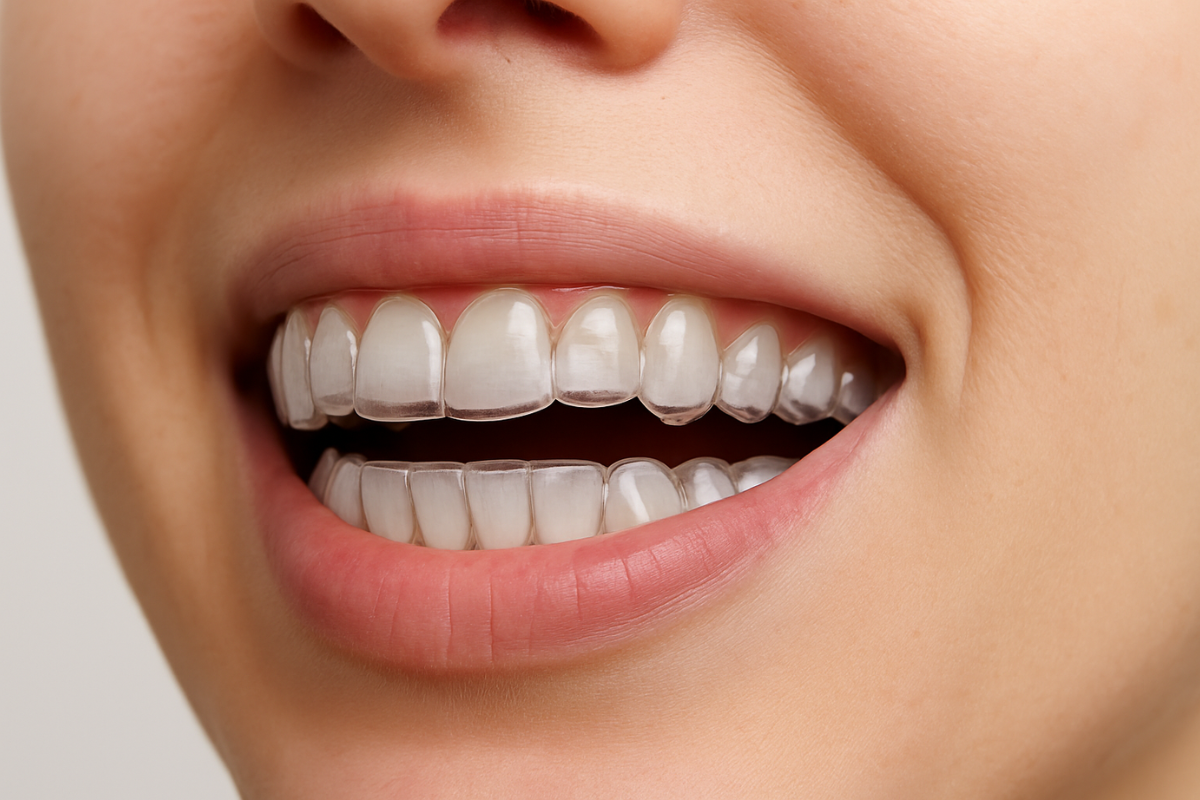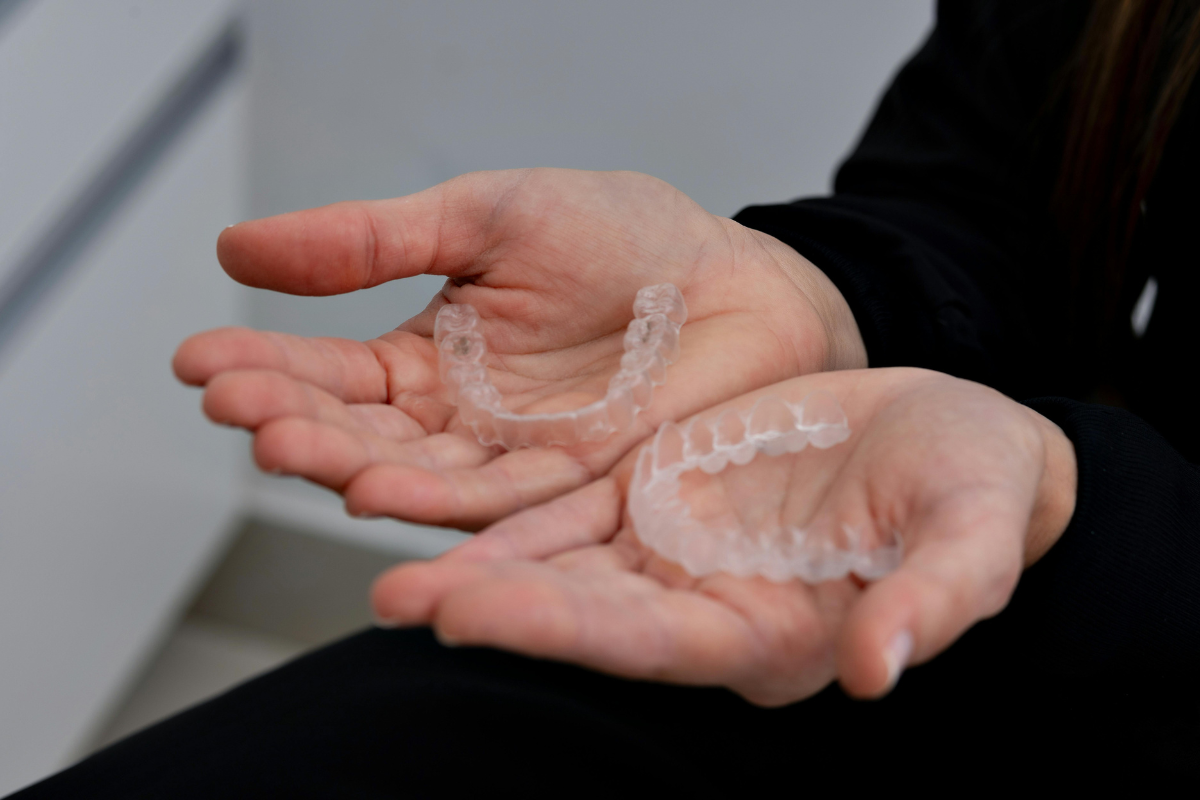News From The House
Your go-to guide to all things happening at The House of Smile Design – from personal smile design stories to dental advice, trends and common questions answered by our experts.

A beautiful smile can transform how you feel and how others perceive you. Digital Smile Design (DSD) elevates smile makeovers. It blends advanced technology with careful planning. This modern method improves how your teeth look. It also ensures your smile fits your face, bite, and dental health.
In this article, we’ll explore the main factors to consider in digital smile design. We’ll help you understand how your facial features affect your smile. You’ll also learn to choose the right materials and plan for long-term care. This covers all you need for a successful smile transformation.
1. The patient’s face and features.
When designing a smile, the dentist must think about the whole face, not just the teeth. After all, a smile is meant to fit with your other facial features, like your lips, eyes, and the shape of your face. Here’s what matters:
- Symmetry: Our faces aren’t perfectly even, but a balanced smile can really help. The dentist will look at your face to make sure your teeth match up well with your natural features.
- Lip movement: The way your lips move when you smile matters. Some people show more gums when they smile, while others show only their teeth. The dentist will consider your lip movements and how they interact with your teeth.
- Smile line: The smile line is the curve formed by the top teeth when you smile. The dentist will adjust it to match the natural curve of your lips. This makes your smile look more natural and balanced.
2. Tooth proportions and shape
When designing your smile, the size, shape, and alignment of your teeth matter a lot. Teeth that are too big, too small, or not aligned properly can affect the overall look. Here’s what the dentist will consider:
- Tooth size: The central teeth (your front teeth) are usually the biggest. They should be slightly larger than the side teeth for a more natural look.
- Tooth alignment: Misaligned teeth can make your smile look uneven. Digital Smile Design helps the dentist plan exactly where each tooth should go.
- Gum visibility: Some people have a “gummy” smile, meaning their gums show a lot when they smile. The dentist may work to reduce this gum visibility for a more balanced look.
3. How your teeth fit together
The way your upper and lower teeth fit together is important for both looks and function. If your bite is off, it can lead to issues with chewing and jaw pain. Here’s what needs to be checked:
- Front teeth: Your front teeth help guide your jaw movements. This is key to how your smile works and how it appears.
- Back teeth: The back teeth play a role in how the teeth fit together when you bite down. Proper alignment ensures a comfortable and functional bite.
- Jaw health: If you have jaw issues, like pain or clicking, tell your dentist. They will consider this when designing your smile to prevent problems later.
4. Using technology to plan your smile
Digital Smile Design relies on technology to create a plan for your smile makeover. This technology shows dentists how your teeth and face will look together. Here’s what is involved:
- 3D scans: The dentist will take 3D scans of your face and teeth to create an accurate digital model. This allows for a more precise design.
- Mockups: The dentist uses special software. Dentists use it to create a digital mockup of your future smile. This lets you see the result before any work begins, so you can give feedback and make sure you’re happy with the plan.
- Photos and videos: Good photos and videos show the dentist how your smile works. They’ll look at how your lips move when you talk and smile to make sure the final design fits perfectly.
5. What you want in a smile
It’s important for the dentist to understand exactly what you want from your smile makeover. Some people want a dramatic change, while others just want a small improvement. Here’s how your needs will be considered:
- Your preferences: Do you want a bright, white smile, or would you prefer a more natural look? The dentist will discuss these options with you and help you decide what fits best.
- Functional needs: Besides looks, your smile has to be functional. If you struggle with chewing or have sensitive teeth, the dentist will help fix these. Along with that, they help you make your smile.
- Imagine your future smile! Digital simulations let you preview how your smile will look before treatment starts. This ensures the result matches what you imagined.
6. Choosing the right materials
The materials used for your new smile are important. They need to be durable and look natural. Here are some common materials used in DSD:
- Porcelain: Porcelain looks and feels like natural teeth. It’s often used for crowns, veneers, and other dental work. This is because it lasts a long time and matches teeth well.
- Composite resin is a flexible material. You can use it for fillings, bonding, and veneers. It can be matched to the color of your teeth, offering a natural result.
- Zirconia: This strong material is often used for crowns and bridges. It is highly durable, making it great for teeth that endure heavy chewing.
7. The workflow and teamwork.
DSD involves several professionals working together. Here’s how it all comes together:
- Teamwork: The dentist, orthodontist, and lab technician need to collaborate. This collaboration is important to make sure the design is right. Effective communication helps prevent mistakes and ensures the smile design proceeds without issues.
- Technology at work: DSD relies on advanced software and digital tools. It’s key for all technology to work together. Also, everyone should know how to use it correctly for the best results.
- Treatment plan: The process is often quicker thanks to the digital tools used. It’s key to follow a clear timeline. This helps everyone finish their tasks on time.
8. Long-term care and maintenance
A new smile isn’t just for now – it’s for the future too. Here’s what needs to be considered for long-term results:
- Wear and tear: Teeth naturally wear down over time, so it’s important to pick materials that last. The dentist will choose materials that can withstand everyday use.
- Regular check-ups: After your smile makeover, visit the dentist. You need to visit often for check-ups and upkeep. This helps keep your smile in good shape.
- Oral hygiene: Good oral care is essential for maintaining the health of your smile. To keep your new smile for years, brush, floss, and visit the dentist regularly.
Putting it together
A smile makeover is all about creating a smile that works for you, not just perfecting your teeth. Digital Smile Design uses technology to make sure your smile matches your face. It also enhances your features.
With DSD, you get a personalized result that feels comfortable and looks great. It’s a detailed process that takes your unique needs into account, giving you a smile that really suits you.
Ready to transform your smile? Visit House of Smile Design in Echuca for a personalized smile makeover that’s tailored just for you. Book your consultation today!
Similar Articles
Affiliates











Follow @thehouseofsmiledesign


Aesthetic Function Structure Biology


Copyright 2025 HoSD | All rights reserved


